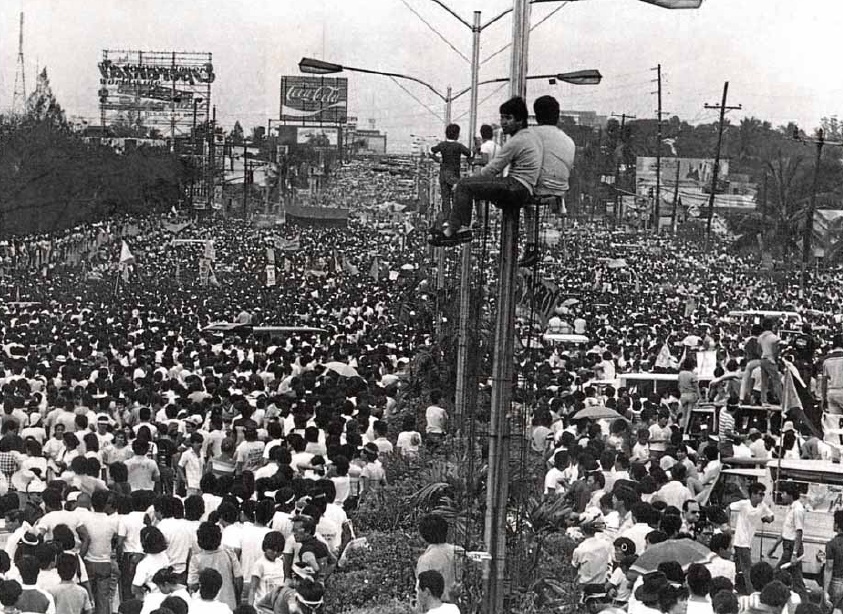
JOINT FORCES Thousands of people jammed Edsa on Feb. 23, 1986, and witnessed how then Defense Minister Juan Ponce Enrile crossed
the street to Camp Crame, where he consolidated forces with then Lt. Gen. Fidel Ramos. PEOPLE POWER BOOK, THE PHILIPPINE REVOLUTION OF 1986
Thirty years after the Edsa People Power Revolution, the Philippines is waging a different fight—to achieve freedom from fear and the freedom to dream, according to the Liberal Party (LP) standard-bearer Mar Roxas.
“In 1986, we fought for democracy and freedom. In 2010, we fought against corruption, deception and theft. Now, in 2016, the fight goes on. But the enemy has changed,” Roxas said, following a visit to the Aquino-Diokno Memorial at Fort Magsaysay in Nueva Ecija.
Now, “we’re back at a crossroads. We have a new fight—to be free from fear, to continue to hope and to achieve our dreams,” he said.
“That is what we are fighting for,” said Roxas, who visited the 77,000-hectare Fort Magsaysay to commemorate the 30th
anniversary of the 1986 Edsa People Power Revolution that toppled the Marcos dictatorship, with his running mate, Leni Robredo.
The Aquino-Diokno Memorial was built to honor the sacrifice of the late Senators Benigno “Ninoy” Aquino Jr. and Jose Diokno, who were incarcerated at the Army camp during martial law.
During the visit, Basilisa Ollero or Aling Cely, who served as the cook during Aquino and Diokno’s imprisonment, took Roxas and Robredo to two rooms in the detention center.
One room was labeled “Alpha,” referring to Aquino, while the other was “Delta,” for Diokno.
Ollero told the LP candidates about the struggles the two detainees experienced during their stay in the military camp.
Aquino and Diokno had been forbidden to talk to each other, she said. They only had two pairs of cotton-made clothing that they washed by themselves. They were allowed to see visitors, but only for a few minutes.